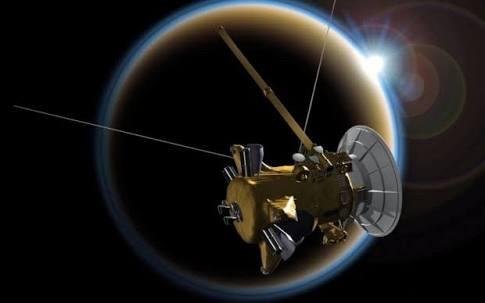One of the Spacecraft that Able to Go Alpha Centauri Stars In Just 40 Years
Man who is not far from all hopes and dreams to do something impossible.
What about the human dreams of interstellar travel seems not just wishful thinking.

image credit by tempo.co
At least, that's what physicists Gerald Jackson and Steven Howe, who have been working on designing the antimatter propulsion system for more than a decade, told Forbes.
Initially their goal was to create an antimatter-powered spacecraft that could send a 10-kilogram (22-pound) probes to the nearest star system, Alpha Centauri, and that in just 40 years using 17 grams (0.6 ounces) antihydrogen.
The 100-kilogram (220-pound) spacecraft will have a diameter of five meters (16 feet), made of carbon, and coated with depleted uranium.
The propulsion will be supported by antimatter stored inside the probe.
When the antihydrogen interacts with the spacecraft, the uranium atom will run fission.
Keep in mind that Fission is a reaction when the atomic nucleus is divided into smaller parts (lighter nuclei), which often produce photons and free neutrons (in the form of gamma rays), and release enormous energy.
And the main product of this fission is two atoms of the same size with high speed and vice versa. And that's One atom that will be the force for the plane to push it forward, and the other will disappear in space.
So through this method, some researchers say that the probe can travel up to 10 percent the speed of light and be able to reach the tip of the solar system in just 10 years.
However, one of the main issues or issues that need to be addressed is how to save the antimatter.
What is Antimetry?
Antimatter is the opposite of normal matter, the substance that creates us. Antimimatic particles, such as positrons and antiprotons, have the same mass as ordinary matter, but have opposite charges.
When matter and antimatter touch, both of them will be destroyed, transformed into pure energy. And Until now there is still no clarity why the universe is made of matter, and not antimatter.
When did the idea arise?
This idea was first proposed in 2003, at the Particle Accelerator Conference, but was not discussed further due to lack of funding.
So, at that time Jackson and Howe, through their company Hbar Technologies, plans to launch a Kickstarter campaign next month that can help them to build a design concept and a system pressure gauge, something that will be proof of the project.
At the beginning They hope this campaign will get $ 200,000, which will be useful to go to the next stage of research.
"Next we will need about $ 100 million to really build small prototype propulsion and power systems."
"Funding (crowdfunding) is probably the best way to show interest in a project when it's time to look for larger investors or government support," said Jackson Forbes
Translated freely from:
http://www.iflscience.com/space/antimatter-propulsion-could-sail-stars